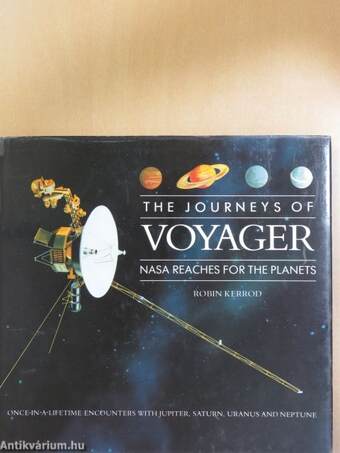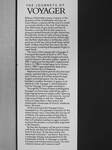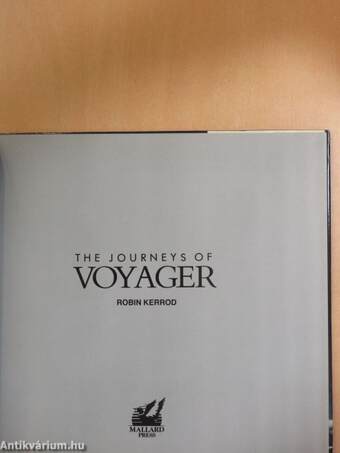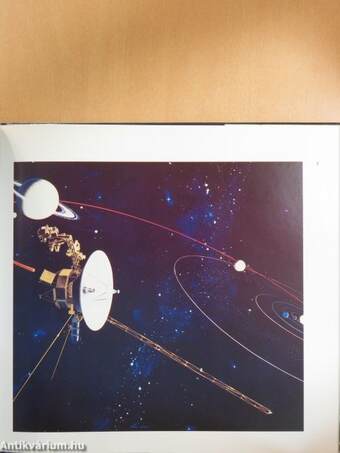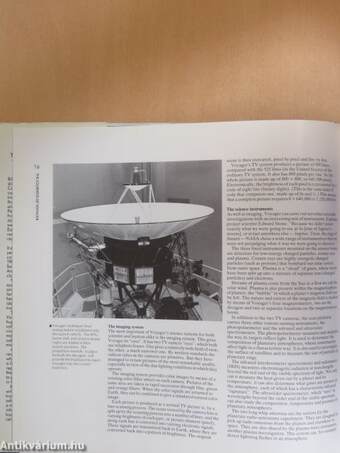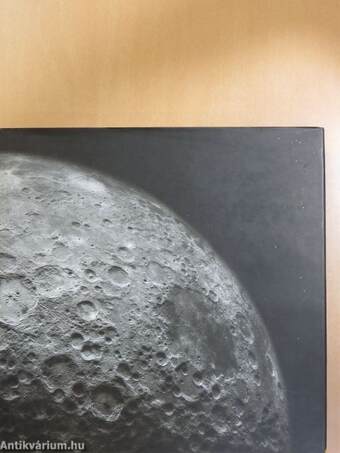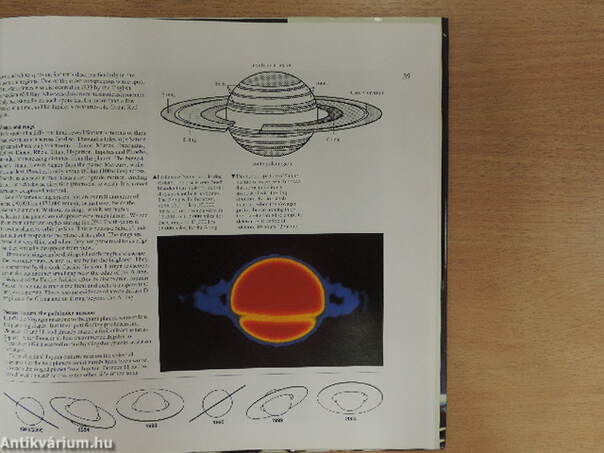1.062.077
kiadvánnyal nyújtjuk Magyarország legnagyobb antikvár könyv-kínálatát

VISSZA
A TETEJÉRE
JAVASLATOKÉszre-
vételek
The Journeys of Voyager
Nasa reaches for the planets
| Kiadó: | Mallard Press |
|---|---|
| Kiadás helye: | New York |
| Kiadás éve: | |
| Kötés típusa: | Fűzött kemény papírkötés |
| Oldalszám: | 80 oldal |
| Sorozatcím: | |
| Kötetszám: | |
| Nyelv: | Angol |
| Méret: | 28 cm x 29 cm |
| ISBN: | 0-792-45382-4 |
| Megjegyzés: | Színes és fekete-fehér fotókkal, ábrákkal. |
naponta értesítjük a beérkező friss
kiadványokról
naponta értesítjük a beérkező friss
kiadványokról
Fülszöveg
THE JOURNEYS OF
VOYAGER
Billions of kilometers away in space, in the direction of the constellation we know as Canis Major;, a spacecraft the size of o small car travels silently in the void. From time to time little hisses of gas shoot out from its thrusters, insuring that Its dish antenna Is always oriented towards a bright, distant star. Periodically, bursts of radio waves emerge from the antenna In the direction of the bright star. But their destination Is not the star, which we know as the Sun, but a small body called Earth. It takes more than four hours for the radio waves, traveling at the speed of light, to reach Earth.
The name of this spacecraft is Voyager 2. It escaped the bonds of Earth In 1977. Two years later It flew past the largest and most colorful planet in the solar system, Jupiter. In 1981 It sped past the beautiful ringed planet Saturn. In 1986 it visited topsy-turvy Uranus. And In 1989 It approached the deep blue, cloud-flecked disc of Neptune.
Neptune... Tovább
Fülszöveg
THE JOURNEYS OF
VOYAGER
Billions of kilometers away in space, in the direction of the constellation we know as Canis Major;, a spacecraft the size of o small car travels silently in the void. From time to time little hisses of gas shoot out from its thrusters, insuring that Its dish antenna Is always oriented towards a bright, distant star. Periodically, bursts of radio waves emerge from the antenna In the direction of the bright star. But their destination Is not the star, which we know as the Sun, but a small body called Earth. It takes more than four hours for the radio waves, traveling at the speed of light, to reach Earth.
The name of this spacecraft is Voyager 2. It escaped the bonds of Earth In 1977. Two years later It flew past the largest and most colorful planet in the solar system, Jupiter. In 1981 It sped past the beautiful ringed planet Saturn. In 1986 it visited topsy-turvy Uranus. And In 1989 It approached the deep blue, cloud-flecked disc of Neptune.
Neptune was Its final port of call in the solar system, reached after a journey of 12 years and 7 billion km (4.5 billion miles) through largely uncharted space. Far, far away, headed In another direction In space. Is an Identical craft. Voyager 1, which blazed a trail for Voyager 2 to Jupiter and Saturn.
Through the TV eyes of these indefatigable Voyagers we have seen enthralling sights — huge raging storms on Jupiter, sulfur-spewing volcanoes on Jupiter's vivid moon lo, myriad rings around Saturn with tiny "shepherd" moons to keep them in their place, the catastrophic landscape of Uranus' shattered moon Miranda
All this and more the Voyagers hove revealed to us. For planetary scientists, for the whole human race. It has been the !ourney of a lifetime. No space probe will be able to repeat such a !ourney until the 2150s. Only then will celestial mechanics again conspire to place the planets In a favorable alignment In the heavens.
By then the Voyagers will be out of contact with Earth, but they will still be blazing trails, trails to the stars. To the stars and to any advanced civilization "out there" they carry a message of hope and goodwill from the inhabitants of Earth. A message in a bottle has been cast Into the cosmic ocean. On what celestial shores will It come to rest?
The Voyager project is, unequivocally, NASA's most outstanding scientific achievement to date. Using the technology of the 1970s, reprogrammed to meet the challenges of each new planetary encounter, it has yielded data which will keep space scientists busy for decades. The Voyager project is, and was, the practical expression of a "giant leap" of the human imagination, the like of which will not be seen again until the 21 st century.
In the lost decade Robin Kerrod has done as much as any popular science writer to familiarize the American and British public with the matchless achievements of NASA, the Notional Aeronautics and Space Administration signed into existence in 1958. Many readers will have enjoyed titles such as Apollo, The Illustrated History of NASA, Space Shuttle, Space Walks, NASA Views of Earth and The Illustrated History of Man in Space, all published within the last six years. Shortly to be added to them is NASA : Visions of Space, which chronicles, through the eyes of NASA artists, the American thrust into space.
Robin Kerrod lives In Salisbury, England, and Is a Fellow of the British Interplanetary Society. In 1988 he was awarded the COPUS/ Science Museum book prize for science writing. A frequent visitor to NASA establishments in the United States, he Is pictured above at Cape Canaveral, from where the Voyager probes began their epic journeys of discovery In 1977. Vissza
Témakörök
- Idegennyelv > Idegennyelvű könyvek > Angol > Művészetek > Fotóművészet
- Idegennyelv > Idegennyelvű könyvek > Angol > Természettudományok > Csillagászat
- Idegennyelv > Idegennyelvű könyvek > Angol > Természettudományok > Egyéb
- Természettudomány > Csillagászat > Bolygók > Egyéb
- Természettudomány > Csillagászat > Idegennyelvű
- Természettudomány > Csillagászat > Űrhajózás, űrkutatás
- Természettudomány > Általános természettudomány > Kutatások, felfedezések
- Természettudomány > Általános természettudomány > Történet
- Természettudomány > Általános természettudomány > Idegennyelvű > Angol
- Művészetek > Fotóművészet > Albumok > Tematikus
- Művészetek > Fotóművészet > Idegen nyelv > Angol
- Művészetek > Fotóművészet > Témái > Fotódokumentumok
Robin Kerrod
Robin Kerrod műveinek az Antikvarium.hu-n kapható vagy előjegyezhető listáját itt tekintheti meg: Robin Kerrod könyvek, művekMegvásárolható példányok
Nincs megvásárolható példány
A könyv összes megrendelhető példánya elfogyott. Ha kívánja, előjegyezheti a könyvet, és amint a könyv egy újabb példánya elérhető lesz, értesítjük.



